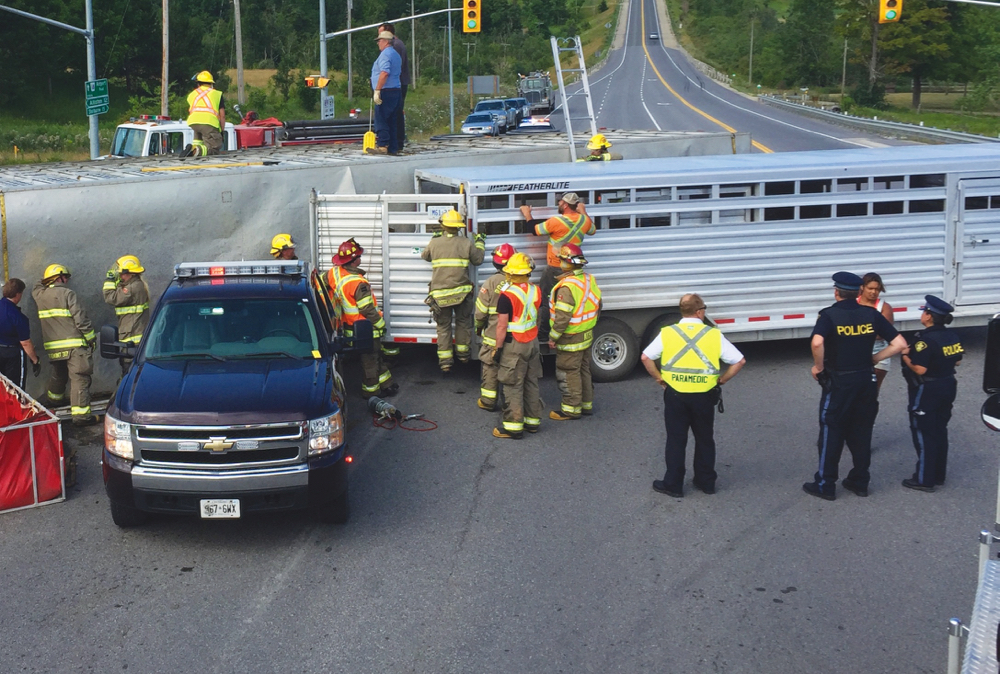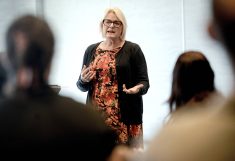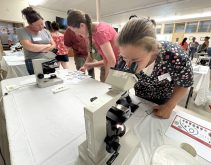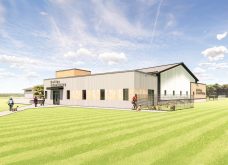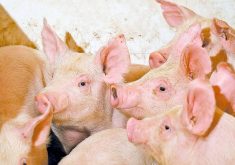Getting livestock out of a downed truck can be tricky, but keeping them calm and together afterwards can be even tougher.
Farm and Food Care Ontario is tackling the problem in an online series of livestock emergency training workshops.
Why it matters: First responders require expertise in animal rescue and handling — as well as networks to acquire containment materials — to manage crises related to livestock transportation.
Read Also

Jennifer Hayes appointed for second term as the Chairperson of the Canadian Dairy Commission
Jennifer Hayes has been re-appointed as Chairperson of the Canadian Dairy Commission by Heath MacDonald, Minister of Agriculture and Agri-Food.
Animals that are injured, trapped, or loose as the result of a vehicular accident require special consideration for the safety of all concerned. Bruce Kelly, program manager for Farm and Food Care Ontario, said first-responders are often not familiar enough with the unique challenges and potential dangers posed by aggravated livestock.
“Truck rollovers are not that common, but when they happen, they’re unlike any event firefighters are used to dealing with… there’s a huge chain of command where animals don’t fit into their existing structure,” said Kelly.
The course curriculum covers trailer designs and extrication points, animal behaviour, laws and regulations, euthanasia protocols and how to develop response teams.
Kelly said containment and subsequent transportation are also emphasized so responders know what to do after the acute crisis has been resolved.
That means knowing where and how to construct holding pens and where to acquire the materials or additional trailers necessary for doing so.
“As you get in the fire truck, you need to figure out where to get trailers to put those animals on, and where you can get some fencing.”
The workshops also go over how to use what they have, like ladders and tarps if it’s a reasonable option.”
Victor MacPherson, a mechanic with the Vaughan, Ont., fire department is the acting trainer for the workshops. MacPherson said clear and effective communication is the most critical factor in executing an effective response to emergencies involving livestock.
Like Kelly, he said that means knowing what resources are available in the local response area. However, he added the driver and their network are also fundamental.
“The drivers are awesome. They are doing the same runs in the same area, so they know that area. If something happens, they can pick up the phone,” said MacPherson. “Bring in the driver and their resources and work with them. Have them in the command system.”
“It’s all about time… No matter what you do someone is going to take a picture of it.”
Challenges of virtual training
Achieving many of the course objectives is more difficult with the online workshops, particularly teaching how and where to cut into overturned trailers.
Kelly said a combination of video demonstrations illustrating the process — the organizers were able to make use of a wrecked trailer to acquire the footage — as well as the penning process, are a reasonable but effective compromise in light of pandemic restrictions.
Additional equine courses available
Farm and Food Care’s workshops are scheduled for May 6 and June 3, with further sessions available by request. Class size is limited to 20.
The workshops run alongside additional animal safety courses hosted by Equine Guelph, though they have a greater emphasis on rescuing downed animals rather than crises specifically related to transport. MacPherson is the acting trainer for both.


